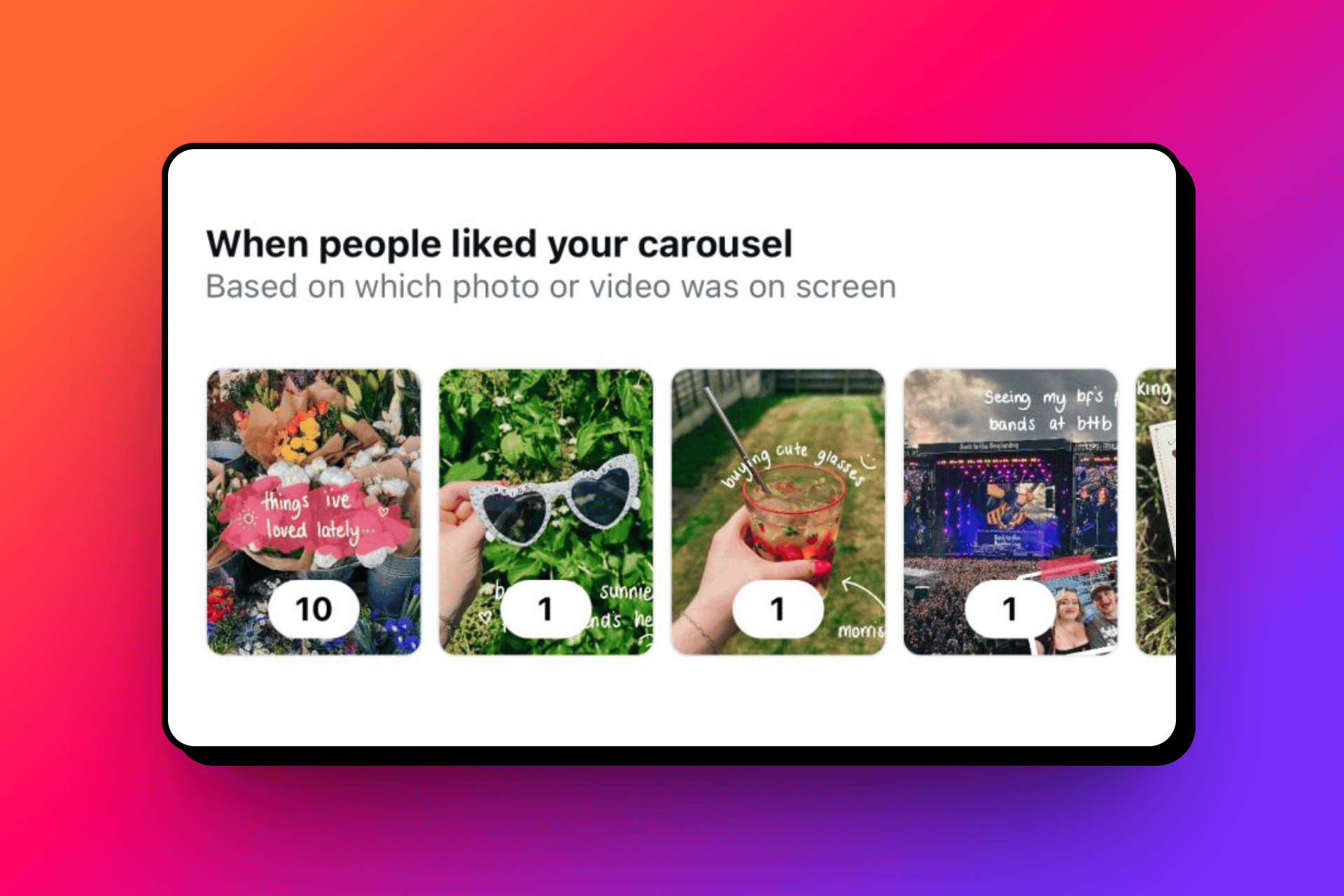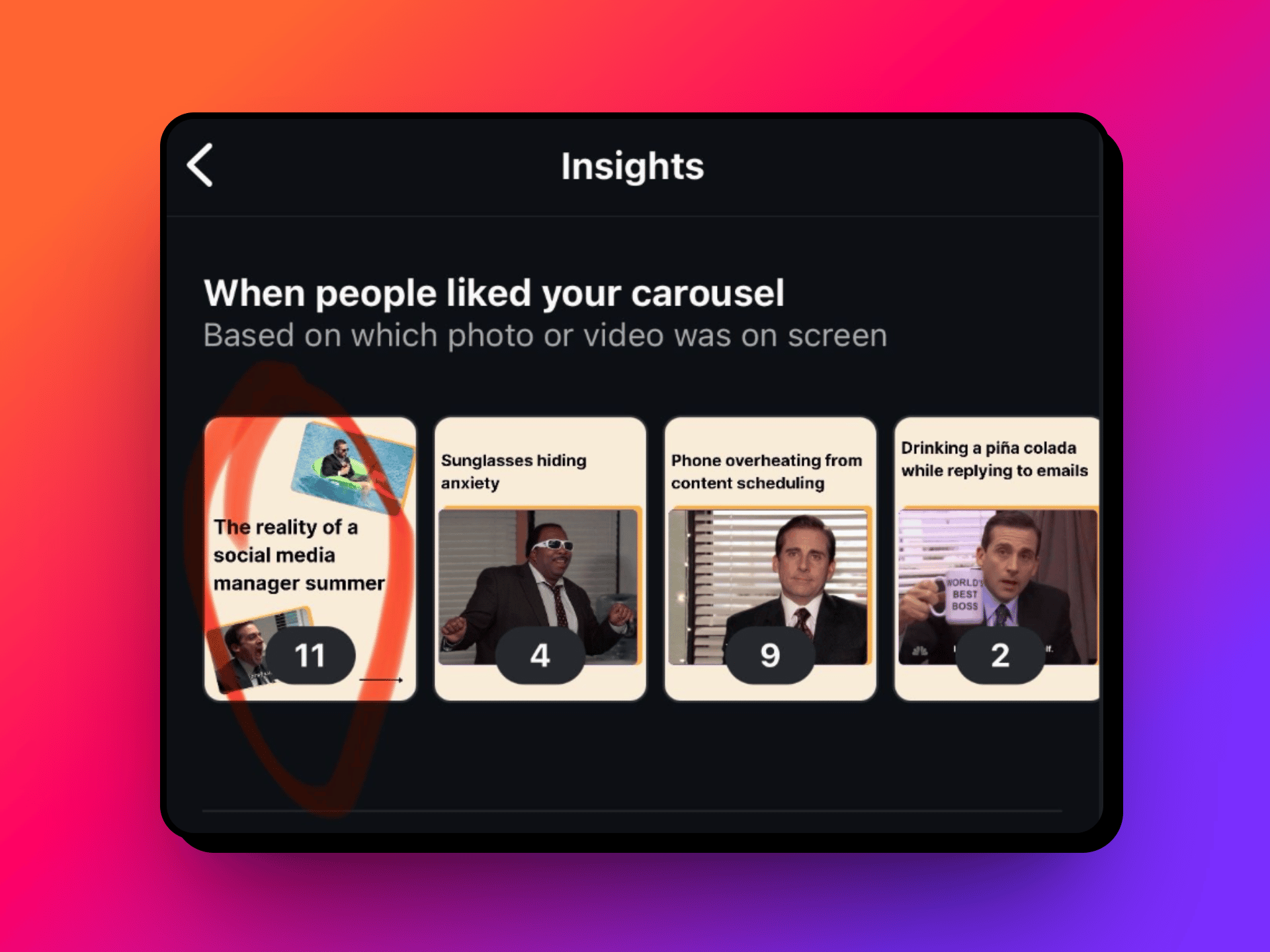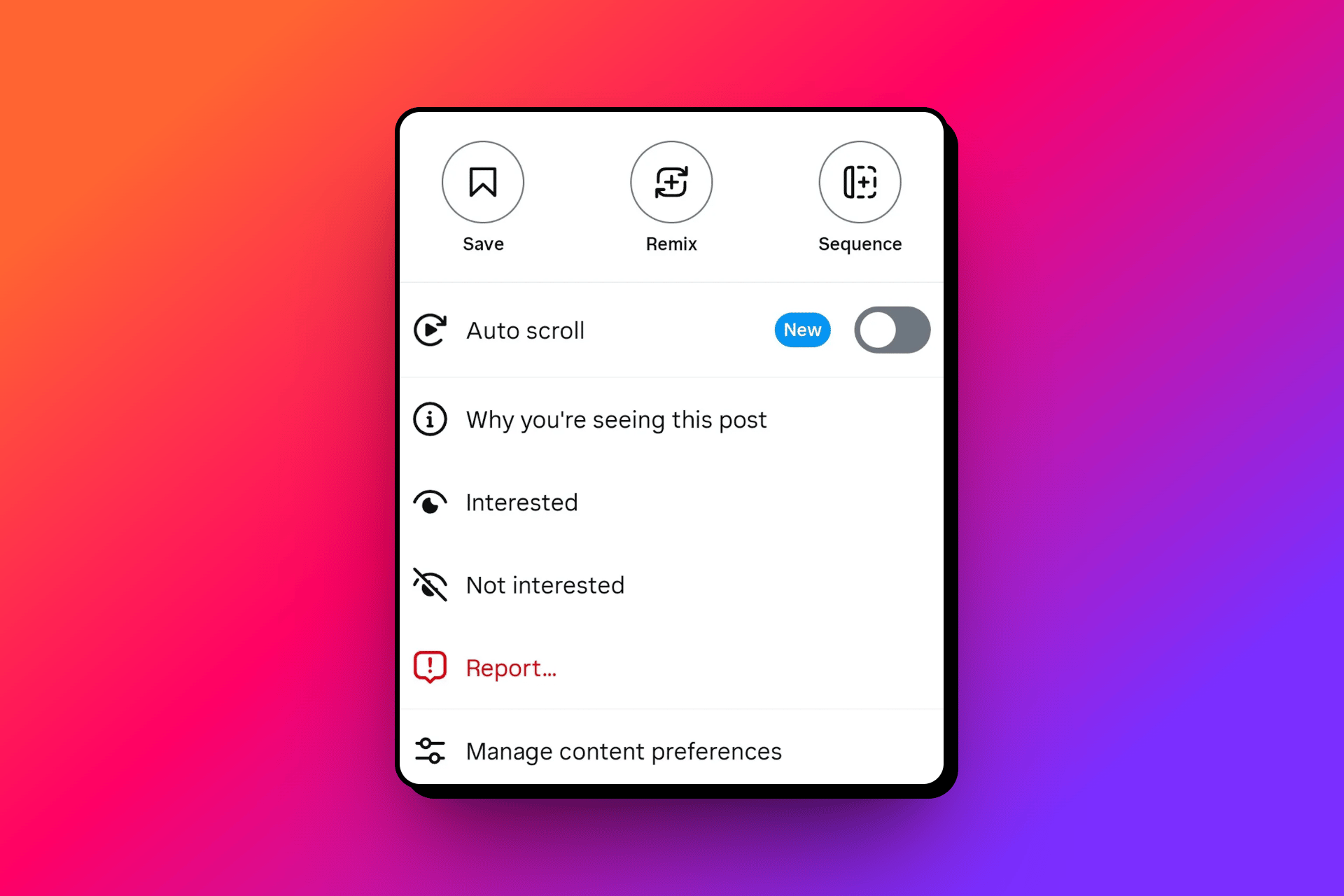
Shannon Evans
TODAY’S EDITION
Instagram is testing new Insights for Carousels that show which specific frame a user was viewing when they liked the post.
Instagram is rolling out an Auto Scroll option, letting users automatically view content without swiping.
Facebook is cracking down on unoriginal content to prioritize original creators.
Adam Mosseri has passed Threads' leadership to longtime Meta employee Connor Hayes.
TikTok added Product Subscriptions for Shop, its version of Amazon’s Subscribe & Save feature.
YouTube launched A/B testing for video titles
LinkedIn is rolling back its algorithm changes that were surfacing older posts.
DEEP DIVE
Instagram Tests Frame-Level Insights for Likes on Carousels: Why Creators & Brands Should Care

Adina Jipa
Instagram is testing a new analytics feature that shows exactly which frame in a carousel post received the like.
How it works: According to screenshots shared by creative Shannon Evans and Socialinsider founder Adina Jipa, a new section in Insights called When people liked your carousel displays a like count for the specific photo or video that was on screen when the Carousel was liked.
Why it matters: This gives creators and brands more granular performance data, which is especially valuable for carousels, one of Instagram’s most widely used formats for how-tos, storytelling, educational content, and commentary. This format relies heavily on sequencing, pacing, and structure.
Being able to see which specific frame drove the like means creators can better understand what content is resonating and why.
Here are a few key ways this new insight can be used:
Does the hook work? If a majority of likes happen on the first frame, it shows the hook is doing its job and that the first photo or video is compelling. This also enables creators and brands to test different first frames to optimize first impressions.
Is retention high? Likes on later frames signal strong retention and engagement throughout the Carousel, validating creators making full use of Instagram’s allowance for up to 20 frames. It also reveals if any mid-carousel frames are weaker and need improvement to maintain interest.
What type of content is best? Patterns in which frames get the most likes, whether it’s the orientation, who’s in the frame, the photography style, use of text overlays, or whether it’s a photo or video, help creators better understand audience preferences. This becomes especially valuable in brand partnerships, informing creative briefs on what resonates most for example, a lifestyle shot featuring the product versus a close-up showing key details.
What should be the order? Frame-level data enables a better understanding of which parts of a Carousel drive engagement, helping creators understand what order of their photos and videos might be best for the viewing experience.
What can be repurposed? Frames that drive the most engagement are prime candidates for repurposing as static posts, Reels, or Stories, giving high-performing content a longer lifespan and wider reach.
This isn’t Instagram’s first update around frames within Carousels. Last year, the platform tested letting users mention specific frames in comments, as spotted by lifestyle creator Brent Colmer, making it easier to identify which image or video a user was referring to. This new test builds on that.
What should come next: Carousels have seen several upgrades recently, from supporting mixed size orientations to becoming eligible for the Reels tab. Instagram has steadily improved its insights for creators, and a natural next step would be adding even deeper Carousel insights and functionality.
This could include view counts per frame, similar to Instagram Stories, and the ability for creators to add unique captions or interactive elements to individual frames. That kind of functionality could also serve as a lightweight alternative to the now-retired Guides feature, which some creators have been asking to bring back.
NEWS, TRENDS & INSIGHTS
Meta

Earning with Dedra
Instagram is testing an Auto Scroll feature. The option appears for some users when they tap the three dots on a post. Enabling it will make the content play and automatically move to the next post. Similar to TikTok and YouTube’s features, it could create a more passive, lean-back viewing experience that drives more views for creators and brands, but also leads to more doom-scrolling.
Facebook is cracking down on unoriginal content. After taking action on over 500,000 accounts engaging in spammy behavior and removing 10 million profiles impersonating creators, Facebook is now enforcing stricter policies on accounts reposting others’ content. This includes limiting the distribution of duplicates, revoking access to monetization features, and linking back to the source on reposted videos. Mirroring Instagram’s efforts to reward original content, which have led to improvements (60% of recommended Reels are now original), Facebook is one of many platforms working to prioritize originality, while still embracing remix culture and AI.
Facebook added the ability for users to add music and themed backgrounds to text posts. These play automatically in the Feed, giving users an easy way to share what they’re listening to as well as artists (such as J Balvin with his new song) a way to tease new music. Meta has been actively pushing further into music discovery, including now playing song previews when sharing from Spotify to Instagram Stories.
Connor Hayes, Meta’s VP of Product for Generative AI, will be the new head of Threads. Adam Mosseri, who had been managing both Instagram and Threads, says the app is mature enough to have its dedicated lead. With 350 million users and steadily carving out its own identity, this should help accelerate Threads’ growth.
Threads now lets users send photos via Direct Messages. This is the first update to DMs since they rolled out globally. It’s a small addition, but it can make conversation more natural and personal by letting users share relevant visuals, like ones that add context to what they may be discussing.
Edits added a new Royalty-Free music tab. Creators can easily search for music they can use in promotional content, such as brand partnerships, without worrying about copyright issues. It also introduced 10 new voice effects and the ability to animate and transform stickers, text, cutouts, and overlays using keyframes, giving creators even more creative control.
TikTok
TikTok is beta testing Songwriter Features, a set of tools designed specifically for songwriters. These include the ability to add a songwriter label and a music tab to spotlight songs they’ve written to their profiles. Developed based on feedback from songwriters and a MIDiA report showing that 80% of songwriters use social media to share their careers (with 53% doing so on TikTok), this is TikTok’s latest move to deepen its ties to the music industry. It also reinforces the idea that everyone is expected to be a content creator now, even those traditionally behind the scenes.
TikTok Shop launched Product Subscriptions for health, beauty, personal care, food and beverage, and home supplies. Sellers can now accept recurring orders for over 150,000 eligible items that feature a “Subscribe” option. Consumers can choose size, delivery frequency, and access discounts. This is an iteration of Amazon’s Subscribe & Save model, a key driver of repeat purchases, helping bring TikTok Shop more in line with its rivals. Unfortunately, at the moment, creators sharing affiliate links will only earn commissions on the initial order, not on subsequent recurring orders.
LinkedIn says using hashtags in posts isn’t necessary. Answering a user’s question, Rishi Jobanputra, Senior Director of Product Management, explained that LinkedIn’s algorithms are now better at connecting users with relevant audiences than when hashtags were first introduced a decade ago. He also revealed that LinkedIn is phasing out its dedicated hashtag feed since few people use it. This echoes what other platforms have said about hashtags, that they can help, but play a minimal role in discovery.
LinkedIn rolled out updates for Premium members. As part of their membership, users can now get six months of Notion Plus + AI for free, joining other offers from the Wall Street Journal, Spotify, and more. Plus, LinkedIn now shows total Custom Button clicks and impressions in a new “Your Premium” analytics section. Premium is pricier than many social media subscriptions, but these recent additions could be enticing for creators and marketers alike.
YouTube
YouTube is expanding its Test & Compare feature to include video titles. In addition to thumbnails, a small group of creators can test different titles for videos to see which ones drive the best performance. Since titles and thumbnails heavily influence whether users click on a video, this gives creators another way to be strategic and data-driven with how they package their content, going with the titles and thumbnails that deliver the best results.
Substack
Substack raised $100 million in Series C funding, valuing the company at over $1.1 billion. The funds will be used to invest in better tools for creators, expand support for its ecosystem of writers, and “double down” on its app. Substack also hinted at potentially introducing ads, possibly similar to beehiiv’s Ad Network. If so, it would mark a shift from its original positioning, but wouldn’t be surprising given how much the platform has evolved from a newsletter platform to more of a social network.
Roblox
Roblox introduced a new licensing platform featuring License Manager and Licenses Catalog. Through this, eligible creators will be able to license IP from Netflix, Lionsgate, Sega, Kodansha, and more to build experiences on the platform. This streamlines the licensing process, which can often be time-consuming and complex, benefiting both IP holders and creators. In recent years, major companies have become more open to licensing their IP to creators. For example, sports leagues like the NFL and NBA allow select creators to use game footage in their content.
THANK YOU
Support the Newsletter: If you're getting value from the newsletter and want to support, you can do so in a few ways: share it with a colleague, contribute via Buy Me A Coffee, or upgrade to the paid tier.
Stay Connected: For more content and updates, visit my website or follow me on LinkedIn, Threads, and Instagram.
Interested in Working Together? I’m available for a full-time role, consulting, advising, brand partnerships, speaking, and more. Let’s connect here.
